By Al Hemingway
In the early morning hours of May 2, 2011, Stealth Hawk helicopters maneuvered their way through the inky blackness toward their target, a walled compound in Abbottabad, Pakistan, to capture or kill the person who masterminded the September 11 attacks against the United States, Osama bin Laden, code-named Geronimo. The operation, called Neptune’s Spear, was a combined effort of the entire intelligence community and carried out by a group of America’s best warriors, SEAL Team Six.
In his new book, Seal Target Geronimo: The Inside Mission to Kill Osama bin Laden (St. Martin’s Press, New York, 2011, 228 pp., photographs, glossary, $25.99, hardcover), former SEAL Team Six member Chuck Pfarrer has written
a factual account of the operation that will keep readers on the edge of their seats. Not only does he give a blow-by-blow description of how it was planned, but he also gives important background information on bin Laden himself, how he became involved in terrorist activities, how he created the Sunni Islamic terrorist organization Al Qaeda, and the in-fighting between the group’s hierarchy.
 Although not a religious zealot in his early life, bin Laden hated Israel and the United States for supplying them with weapons and supplies. His hatred reached a zenith during the crises in Lebanon in the early 1980s. Ironically, it was in Afghanistan where bin Laden saw his first combat, in a manner of speaking. His leadership and military skills were sorely lacking but that did not matter—it was his family’s money that people were after. Bin Laden was the son of a Saudi Arabian multimillionaire who had made his cash in the construction business.
Although not a religious zealot in his early life, bin Laden hated Israel and the United States for supplying them with weapons and supplies. His hatred reached a zenith during the crises in Lebanon in the early 1980s. Ironically, it was in Afghanistan where bin Laden saw his first combat, in a manner of speaking. His leadership and military skills were sorely lacking but that did not matter—it was his family’s money that people were after. Bin Laden was the son of a Saudi Arabian multimillionaire who had made his cash in the construction business.
Pfarrer uncovers the petty jealousies and in-fighting within the Al Qaeda leadership. Much of the unrest came from Ayman al-Zawahiri, an Egyptian physician who eventually rose to be the number-two man in the group. His outright lies and treachery caused the deaths of many in the group’s inner circle as he lusted for bin Laden’s seemingly unending cash flow. Ironically, it may have been Zawahiri who schemed to have bin Laden’s secret hideout located after he learned that the courier he was using to keep bin Laden informed was being watched. Today, the nefarious doctor is the current head of Al Qaeda.
Pfarrer clears up the “forty-five minute” firefight fallacy surrounding the operation, in which SEALs reportedly had to shoot their way upstairs into bin Laden’s bedroom, where they gunned him down. The author received firsthand information from SEAL Team Six members who told him they fired only 12 rounds and killed bin Laden as he was reaching for his weapon. One of his countless wives was accidentally wounded when he was hiding behind her. Bin Laden’s son and two bodyguards were killed when they attempted to fire back at the SEALs. The wife of Abu Ahmed al Kuwaiti, the courier, was also killed accidentally when the bullet that brought him down passed through his body and hit her. No true innocents were harmed—the SEALs were up the stairwell and into bin Laden’s room in a matter of seconds. There was no prolonged firefight.
Pfarrer’s book reads like a thriller, with the added advantage of being true. He rightly praises the men of SEAL Team Six, calling them a modern-day band of brothers. At a private ceremony, when President Barack Obama asked which one of the SEALs had killed bin Laden, one of the team’s leaders simply replied: “We all did it, sir. It was all of us.”
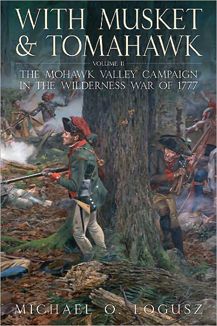 With Musket & Tomahawk, Volume II, The Mohawk Valley Campaign in the Wilderness War of 1777 by Michael O. Logusz, Casemate Publishers, Havertown, PA, 2012, 262 pp., maps, illustrations, notes, index, $32.95, hardcover.
With Musket & Tomahawk, Volume II, The Mohawk Valley Campaign in the Wilderness War of 1777 by Michael O. Logusz, Casemate Publishers, Havertown, PA, 2012, 262 pp., maps, illustrations, notes, index, $32.95, hardcover.
By 1777, the Mohawk Valley was a hotbed of military activity, with British and Colonial spies abuzz with information on the impending British invasion of the region. The raids were on several fronts. British General John Burgoyne would strike southward toward Albany. Meanwhile, from the west, another force of British regulars, Loyalist units, and Indians, led by Brig. Gen. Barry St. Leger, would make their way toward Burgoyne in a pincer-type movement, destroying everything in their path.
The only viable patriot force standing against the British invaders was the Northern Army, a polyglot force consisting of Continental Army regulars, farmers, settlers, blacks, and some friendly Indians—a diverse group to say the least.
St. Leger’s army quickly laid siege to Fort Stanwix. Outnumbered, Brig. Gen. Nicholas Herkimer led an 800-man militia unit to reinforce the beleaguered defenders of Fort Stanwix. Instead, St. Leger’s men ambushed them at Oriskany, a few miles from the fort. A bloody battle ensued and, despite being surprised, Herkimer’s soldiers quickly organized a defense and fought extremely well, inflicting heavy casualties on the British and driving them off. St. Léger’s Indian contingent was disgusted by the false promises made by the British and the fact that they were doing the lion’s share of the fighting. Many fled, some even killing British soldiers and Loyalists before they did.
After his humiliating defeat at Oriskany and his failure to seize Fort Stanwix, St. Leger was forced to return to Canada with a small remnant of his command. With little knowledge of frontier warfare and even less of the various Indian tribes that accompanied him, St. Leger’s plan was doomed to failure.
With the Mohawk Valley and surrounding territory in American hands after Burgoyne’s surrender at Saratoga in October, the British threat had been thwarted. The flow of supplies, so desperately needed by General George Washington’s army, could now continue without fear of reprisals.
Logusz has written a colorful and accurate account of the bloody struggle between a powerful professional army and a small band of American patriots who were determined to stop them—and did.
 The Long Road to Antietam: How the Civil War Became a Revolution by Richard Slotkin, Liveright Publishing, New York, 2012, 496 pp., maps, illustrations, notes, bibliography, $32.95, hardcover.
The Long Road to Antietam: How the Civil War Became a Revolution by Richard Slotkin, Liveright Publishing, New York, 2012, 496 pp., maps, illustrations, notes, bibliography, $32.95, hardcover.
The year 1862 was a crucial one in the Civil War. Confederate President Jefferson Davis had decided on a three-pronged offensive strategy to take the war to the North. General Robert E. Lee’s Army of Northern Virginia would invade Maryland, hoping that Southern sympathizers in the border state would flock to the Confederate cause. Meanwhile, General Braxton Bragg’s Army of Tennessee would crush Maj. Gen. Don Carlos Buell’s Army of the Ohio while Maj. Gen. Earl van Dorn’s Rebel forces attacked the Federals at the important rail junction of Corinth, Mississippi.
Slotkin does an excellent job of tracing the strategies used by both sides. By this time, President Abraham Lincoln realized that there was no chance the two sides could hammer out a peaceful solution to the question of slavery and the preservation of the Union. Lincoln knew that he had to commit to total war, even if it cost him re-election. There were even rumors of a military coup or dictatorship with egotistical Maj. Gen. George B. McClellan at its head.
In spite of all of this, Lincoln wrote the Emancipation Proclamation in the summer of 1862, although he would not issue it until there was a Union victory. And that victory—albeit a slim one—came at Antietam. Even though the edict clearly defined that the abolishment of slavery was intrinsically linked to the preservation of the Union, it still took nearly three more years of bloody war to bring it to fruition—and another 100 years before African Americans were on an even footing with white Americans.
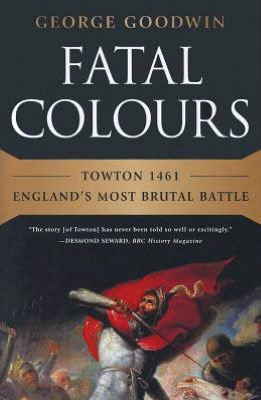 Fatal Colours: Towton1461, England’s Most Brutal Battle by George Goodwin, W.W. Norton, New York, 288 pp., maps, illustrations, notes, $27.95, hardcover.
Fatal Colours: Towton1461, England’s Most Brutal Battle by George Goodwin, W.W. Norton, New York, 288 pp., maps, illustrations, notes, $27.95, hardcover.
The author delivers a vivid description of one of the biggest and most pivotal battles ever fought on English soil—the Battle of Towton, on Palm Sunday, 1461. The savage combat took place amid a raging sleet and snowstorm that ultimately had a decided effect on the outcome. England at the time was in the throes of a great civil war, the War of the Roses, fought between 1455 and 1487. The opposing sides, the royal Houses of York and Lancaster, were contesting the future leadership of the country. Whoever was victorious on the battlefield of Towton would control England.
Leading the troops on the Lancaster side was King Henry VI (although he was absent from the battlefield), an ineffective king who struggled with bouts of insanity that many historians believe may have been caused by schizophrenia. Edward IV, a muscular, 6-foot, 4-inch knight, was in command of the troops of the House of York and was an altogether more imposing figure on the battlefield than the slightly built Henry.
The battle opened with the Lancastrians having the edge in troops and the Yorkist army awaiting the arrival of reinforcements. However, William Neville, first Earl of Kent, was an adept military strategist who knew his archers could reach the Lancaster lines because of the strong wind at their backs. When their deadly missiles found their mark, the Lancastrian army quickly withdrew but regrouped and attacked. The two sides fought for hours in the terrible weather, and the tide turned when additional men arrived for the House of York. As the Lancastrian soldiers fled, they were chased and cut down by Yorkist horsemen. Others were trampled to death or drowned attempting to cross the Aire River. The death toll was an estimated 28,000 killed outright. In the aftermath of the sickening carnage, Edward IV ascended to the throne and altered English politics forever.
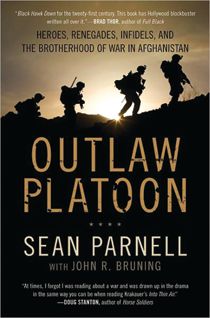 Outlaw Platoon: Heroes, Renegades, Infidels, and the Brotherhood of War in Afghanistan by Sean Parnell with John R. Bruning, William Morrow, New York, 2012, 374 pp., photographs, glossary, $26.99, hardcover.
Outlaw Platoon: Heroes, Renegades, Infidels, and the Brotherhood of War in Afghanistan by Sean Parnell with John R. Bruning, William Morrow, New York, 2012, 374 pp., photographs, glossary, $26.99, hardcover.
This book, dealing with the infantrymen’s war in Afghanistan, is nothing short of outstanding. Sean Parnell, an infantry platoon leader with Bravo Company, 2nd Battalion, 87th Infantry Regiment, 10th Mountain Division, has delivered a hard-hitting account of close-quarter combat in a remote region of that battle-scarred country. A canny junior infantry officer, Parnell could read his men well and learned to listen carefully to those who had already served there, especially Staff Sgt. Phillip Baldwin, a mature NCO who had left civilian life and entered the military after the September 11 attacks.
One of the most riveting sections of Parnell’s book concerns his personal baptism under fire. His thoughts drift back to his time with his friends and family, but soon he realizes that he must act quickly to get his men out of the ambush that had them trapped. Only a combat veteran can truly understand the adrenaline that pulsates through a soldier’s body when under fire. Parnell rallied his troops and ignited those around him to fight their way out, sustaining relatively few casualties and routing the enemy.
Kudos to Parnell. This is a well-written, suspenseful, and poignant book that gives the reader a powerful insight to those who endure the true brunt of the fighting in every war—the rifleman with the bayonet attached to the end of his weapon.
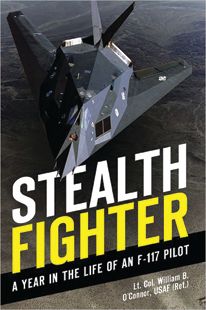 Stealth Fighter: A Year in the Life of an F-117 Pilot by Lt. Col. William B. O’Connor, USAF (Ret.), Zenith Press, Minneapolis, MN, 2012, 424 pp., maps, photographs, glossary, $30.00, hardcover.
Stealth Fighter: A Year in the Life of an F-117 Pilot by Lt. Col. William B. O’Connor, USAF (Ret.), Zenith Press, Minneapolis, MN, 2012, 424 pp., maps, photographs, glossary, $30.00, hardcover.
Here’s another great book written by a pilot who flew the F-117 Stealth fighter during the Bosnian War in the late 1990s. The Nighthawk was officially retired by the Air Force in the late 1980s, allowing O’Connor to write his account. He traces his training at Holloman AFB in New Mexico and his top-secret missions over Iraq, the Panama Canal, and Serbia. The Nighthawk, because of its unique design, has always been surrounded in myth. O’Connor’s fascinating story puts the reader in the cockpit as he describes his hazardous flights over hostile skies. Always flying at night to avoid detection, the Stealth fighter could deliver its ordnance on an unsuspecting enemy and be homeward bound before they knew what hit them.
O’Connor admits a feeling of accomplishment when he scrutinized photographs of his bomb damage assessment. His missile had done serious damage to the Serbian headquarters structure at Kragujevac, Serbia’s fourth largest city. O’Connor was proud of that.
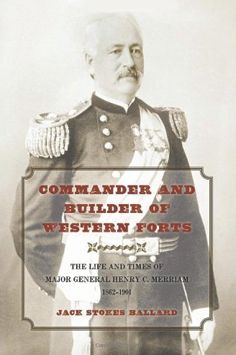 Commander and Builder of Western Forts: The Life and Times of Major General Henry C. Merriam, 1862-1901 by Jack Stokes Ballard, Texas A&M Press, College Station, 2012, 252 pp., maps, photographs, notes, index, $35.00, hardcover.
Commander and Builder of Western Forts: The Life and Times of Major General Henry C. Merriam, 1862-1901 by Jack Stokes Ballard, Texas A&M Press, College Station, 2012, 252 pp., maps, photographs, notes, index, $35.00, hardcover.
Henry C. Merriam served in the U.S. Army for nearly 40 years. Although his name is not as easily recognizable as those of the flamboyant George Armstrong Custer or Philip Sheridan, his contributions during the postwar westward expansion were nonetheless every bit as important as the battles fought on the Great Plains, Texas, and the Pacific Northwest.
A native of Maine, Merriam served in the Civil War as a commander of black troops, earning the Medal of Honor in the waning days of the conflict. He decided on the life of a career army officer and traveled to the West after the war. His first wife and daughter tragically drowned when an unexpected rainstorm hit his men as they were traveling near the Concho River. Merriam spent decades planning and supervising the construction of a string of forts throughout the West. His sharp eye and keen vision established locations that could serve the needs of both military and civilian interests.
A man of the highest integrity, Merriam rose through the ranks and retired a major general. He was a prolific writer and his notes survived, giving historians a clear picture of his significant contributions to 19th-century America. As the author states, Merriam did not just sit idly by, his leadership skills and courage made him a “shaper of the times.”
 True Crime in the Civil War: Cases of Murder, Treason, Counterfeiting, Massacre, Plunder & Abuse by Tobin T. Buhk, Stackpole Books, Mechanicsburg, PA, 2012, 312 pp., photographs, notes, index, $21.95, softcover.
True Crime in the Civil War: Cases of Murder, Treason, Counterfeiting, Massacre, Plunder & Abuse by Tobin T. Buhk, Stackpole Books, Mechanicsburg, PA, 2012, 312 pp., photographs, notes, index, $21.95, softcover.
In any armed conflict in human history, crimes have been committed by military personnel ranging from desertion to rape and murder. The Civil War was no different. Many Americans have a glamorized vision of Northern and Southern boys gloriously fighting for their respective causes, gallant knights embodying courage and righteousness. And while this was true for the most part, every army has its small percentage of losers and outright criminals. The crimes mentioned in the title did not start with the Vietnam War. Good and bad soldiers have existed during every period of world history, and the Civil War was no different.
Buhk has selected various crimes, some extremely heinous, that occurred during the Civil War. Some are well-known to war enthusiasts, including the Fort Pillow massacre, the Lawrence, Kansas, raid, and the Confederate plot to burn down New York City. But the author has also documented some unusual crimes, such as the terrible mass murder of the Beckham family in Tennessee in 1863, the draft riot in Detroit that was sparked when a dark-skinned man was wrongly charged with raping a nine-year old girl, and the exploits of Sue Mundy, the notorious female guerrilla who was, in reality, a male.
As Buhk notes, we will never know the full extent of the crimes that were committed during the conflict. Records were lost and some of the felonies were probably never reported, especially in the case of sexual assault. Still, the author has done a marvelous job of portraying a slice of history that is rarely reported or written about.
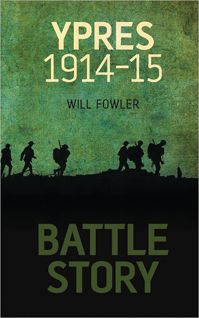 Battle Story: Ypres, 1914-15 by Will Fowler, Spellmount, Gloucestershire, England, 2012, 160 pp., illustrations, index, $17.95, hardcover.
Battle Story: Ypres, 1914-15 by Will Fowler, Spellmount, Gloucestershire, England, 2012, 160 pp., illustrations, index, $17.95, hardcover.
This short and concise book pays tribute to the nearly 55,000 British and Commonwealth soldiers who perished at the first and second battles for Ypres, Belgium, from October 1914 until the following May. The battle was noteworthy for being the first time that poisonous gas was used by the Germans, in April 1915, and the first time a flamethrower was used in combat. A young German corporal who fought there was temporarily blinded by mustard gas and evacuated to a hospital to recover. His name was Adolf Hitler.
The small hamlet of Ypres was strategically important because it could block the Germans’ northern advance into France. It was symbolic to the Belgians as well because it was the last section of their country that had not been overrun by the German juggernaut.
Today, visitors to Ypres are overwhelmed by the horrific loss of life in the many months of fighting there. Since the late 1920s, a ceremony has been held every day to commemorate the fallen, especially those whose remains were never found. Poet Laurence Binyon remembers the dead by writng, “At the going down of the sun and in the morning, we will remember them.”
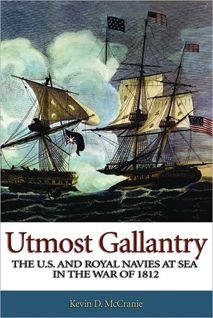 Utmost Gallantry: The U.S. and Royal Navies at Sea in the War of 1812 by Kevin D. McCranie, Naval Institute Press, Annapolis, MD, 2011, 384 pp., maps, illustrations, notes, index, bibliography, $39.95, hardcover.
Utmost Gallantry: The U.S. and Royal Navies at Sea in the War of 1812 by Kevin D. McCranie, Naval Institute Press, Annapolis, MD, 2011, 384 pp., maps, illustrations, notes, index, bibliography, $39.95, hardcover.
A professor at the Naval War College in Newport, Rhode Island, McCranie has written a fine book on the War of 1812 from the perspective of both the American and British navies. Great Britain did not believe that the fledgling United States would dare match its miniscule navy against the most powerful armada in the world at that time. But the upstart Americans did just that, and with leaders such as Stephen Decatur, William Bainbridge, and Isaac Hull they gave the British men-of-war a run for their money.
Examining both countries’ strategies and decisions for maritime operations, McCranie describes in great detail the various engagements fought on the high seas. America’s small navy gave a good showing of itself, especially in the early phases of the conflict, and easily outshone the dismal efforts of the American Army in what has been called the nation’s second war of independence.
 Lincoln’s Cavalrymen: A History of the Mounted Forces of the Army of the Potomac, 1861-1865 by Edward G. Longacre, University of Oklahoma Press, Norman, 2012, 470 pp., maps, photographs, notes, index, $26.95, softcover.
Lincoln’s Cavalrymen: A History of the Mounted Forces of the Army of the Potomac, 1861-1865 by Edward G. Longacre, University of Oklahoma Press, Norman, 2012, 470 pp., maps, photographs, notes, index, $26.95, softcover.
It has long been thought that the Southern horse soldier in the Civil War far surpassed his Northern counterpart in riding ability, tactical skills, and overall horsemanship. In this groundbreaking book, being reissued to coincide with the 150th anniversary of the conflict, historian Edward Longacre gives a new interpretation of the cavalry capabilities of the Union horsemen and how at times they equaled and even outperformed their Confederate adversaries.
There is no doubt that the North’s considerable advantage in horses and hay played a key role in helping defeat the Confederacy, which was sorely lacking in both commodities. Longacre also discusses the improving Union leadership in the Army of the Potomac’s cavalry, from the brash and arrogant George Armstrong Custer to the bandy-legged Irishman Phil Sheridan and the inept and scheming Judson “Kill Cavalry” Kilpatrick.
Longacre’s book gives a clear and concise understanding of the development of the Union Army in the eastern theater of operations—a development that was helped immeasurably by the rapid improvement of its mounted forces.
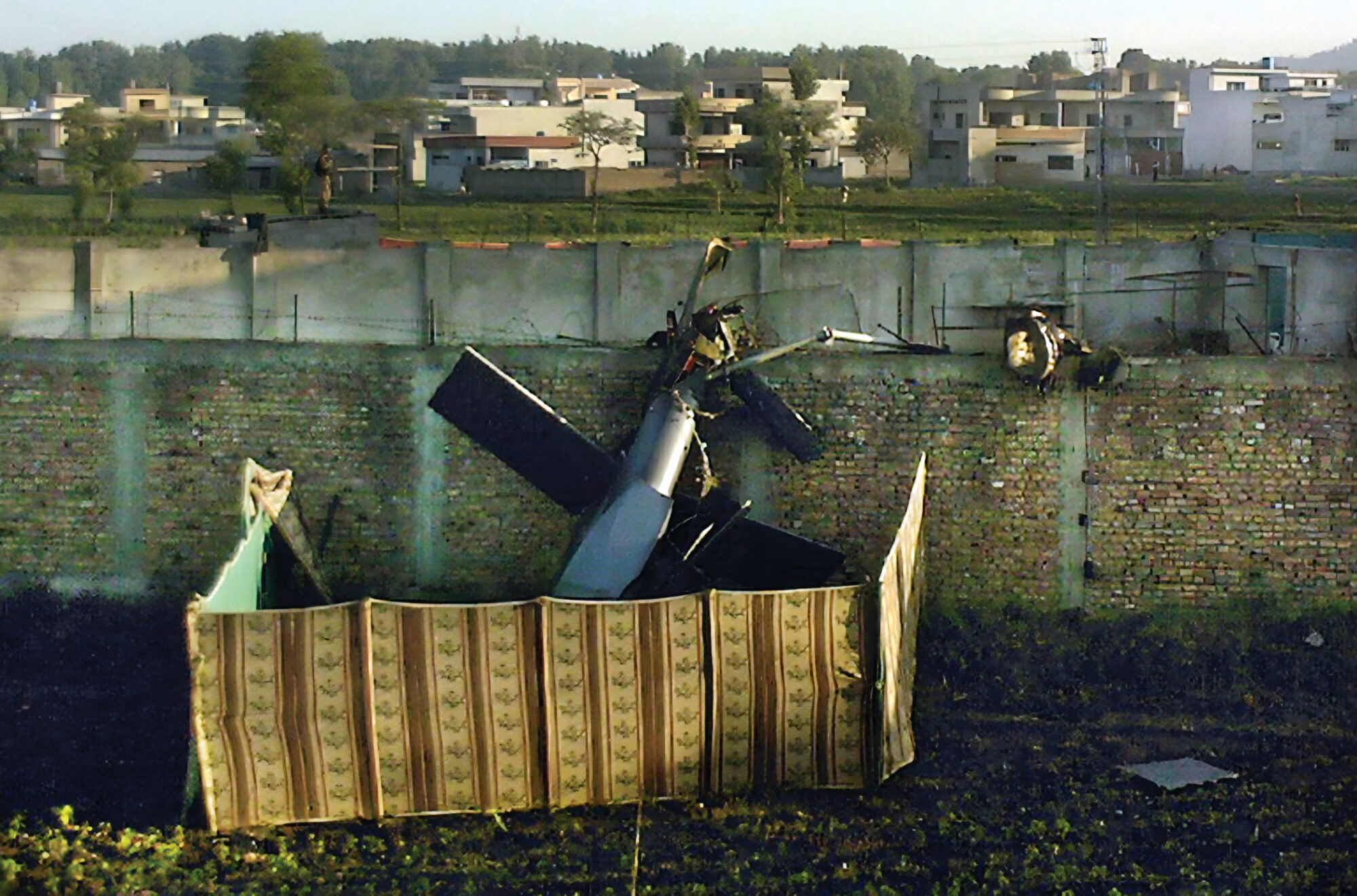
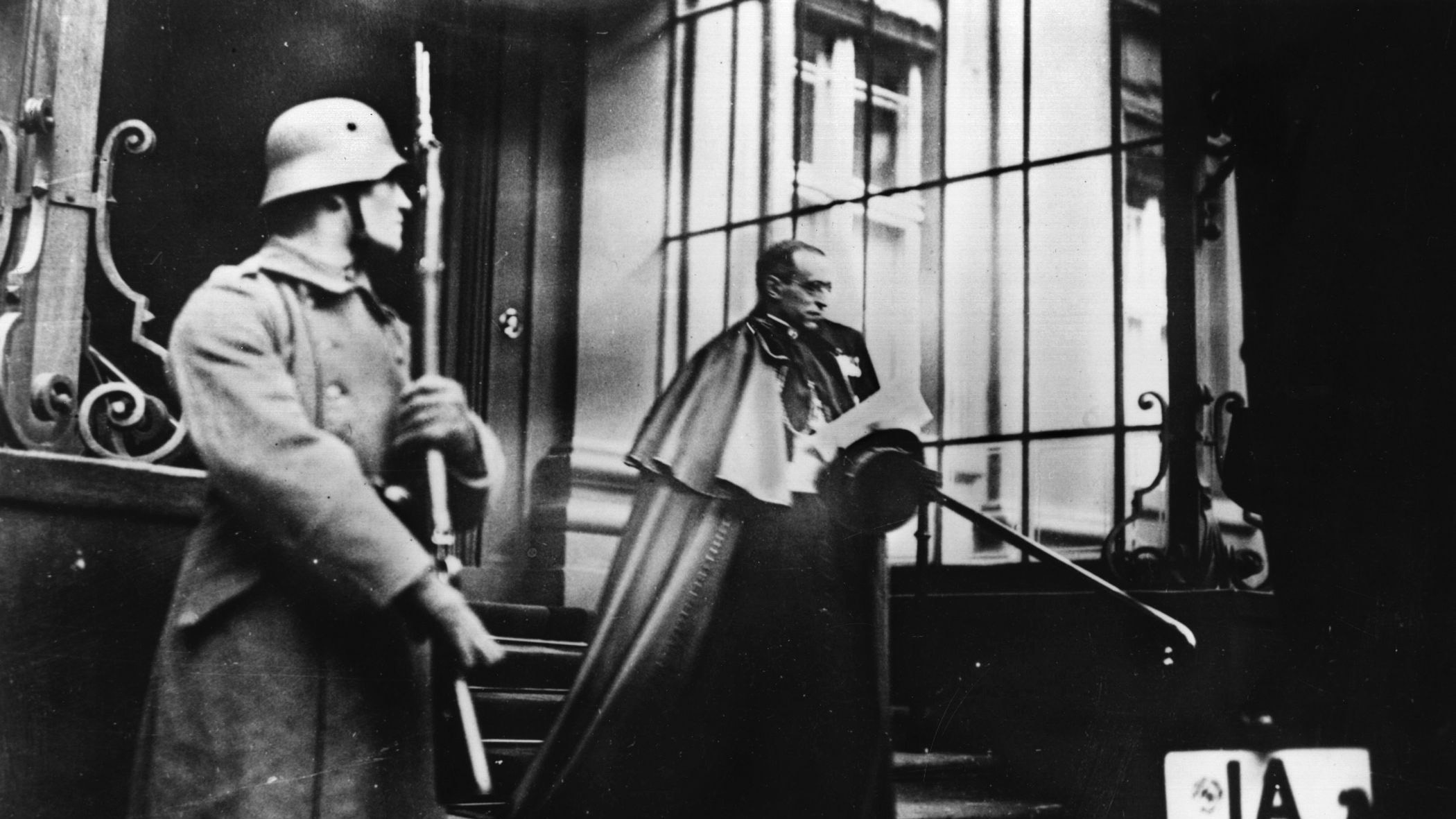
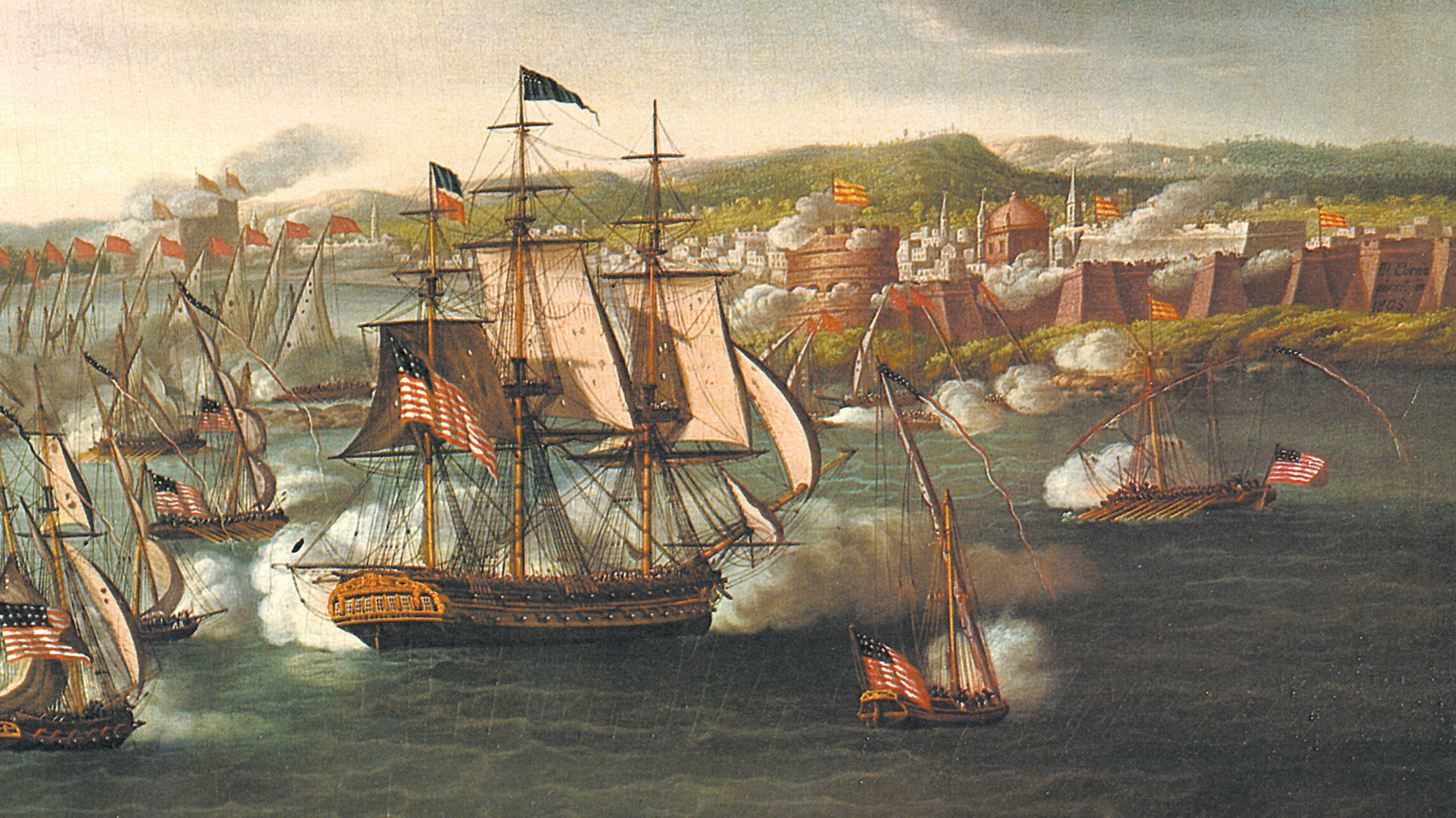
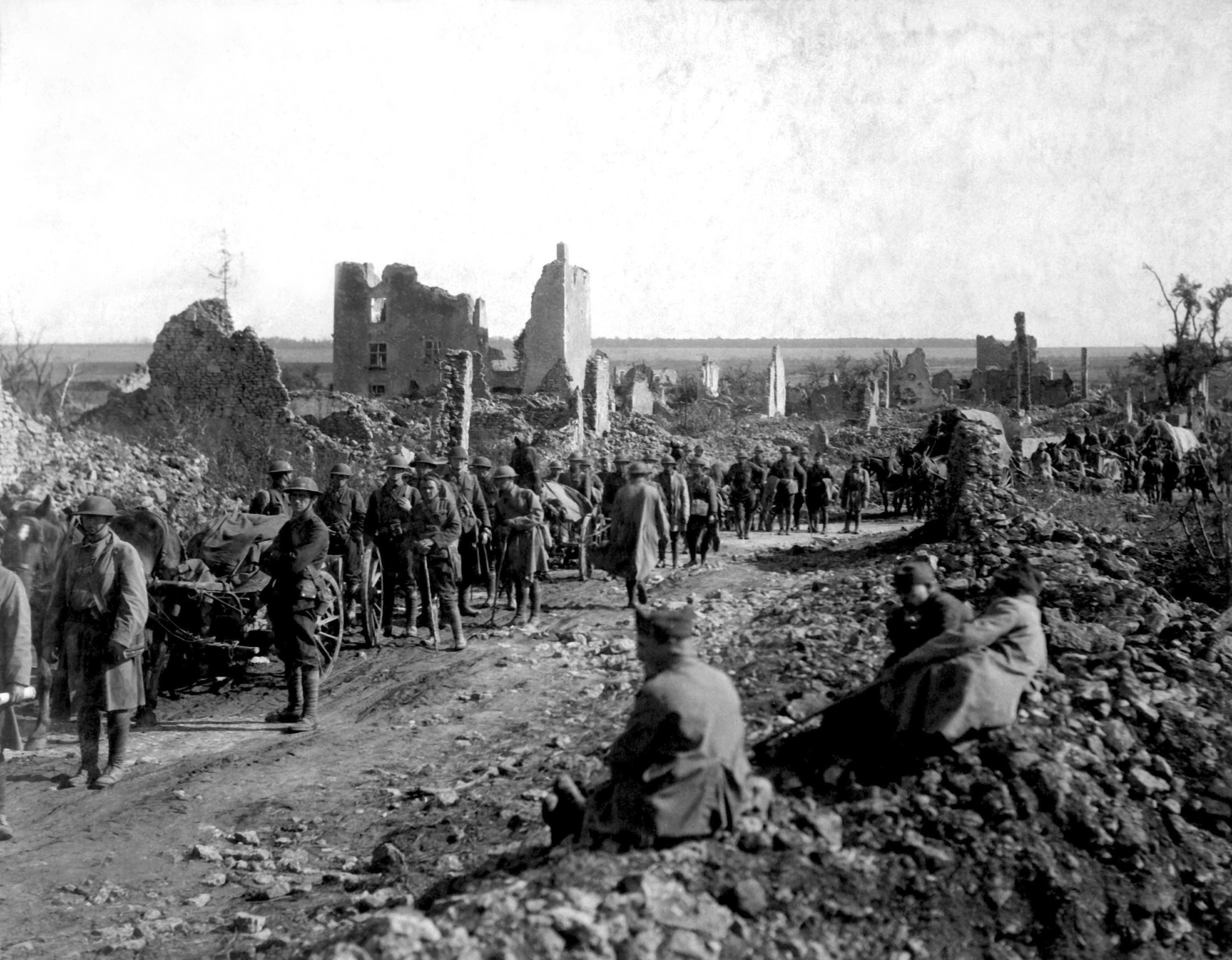
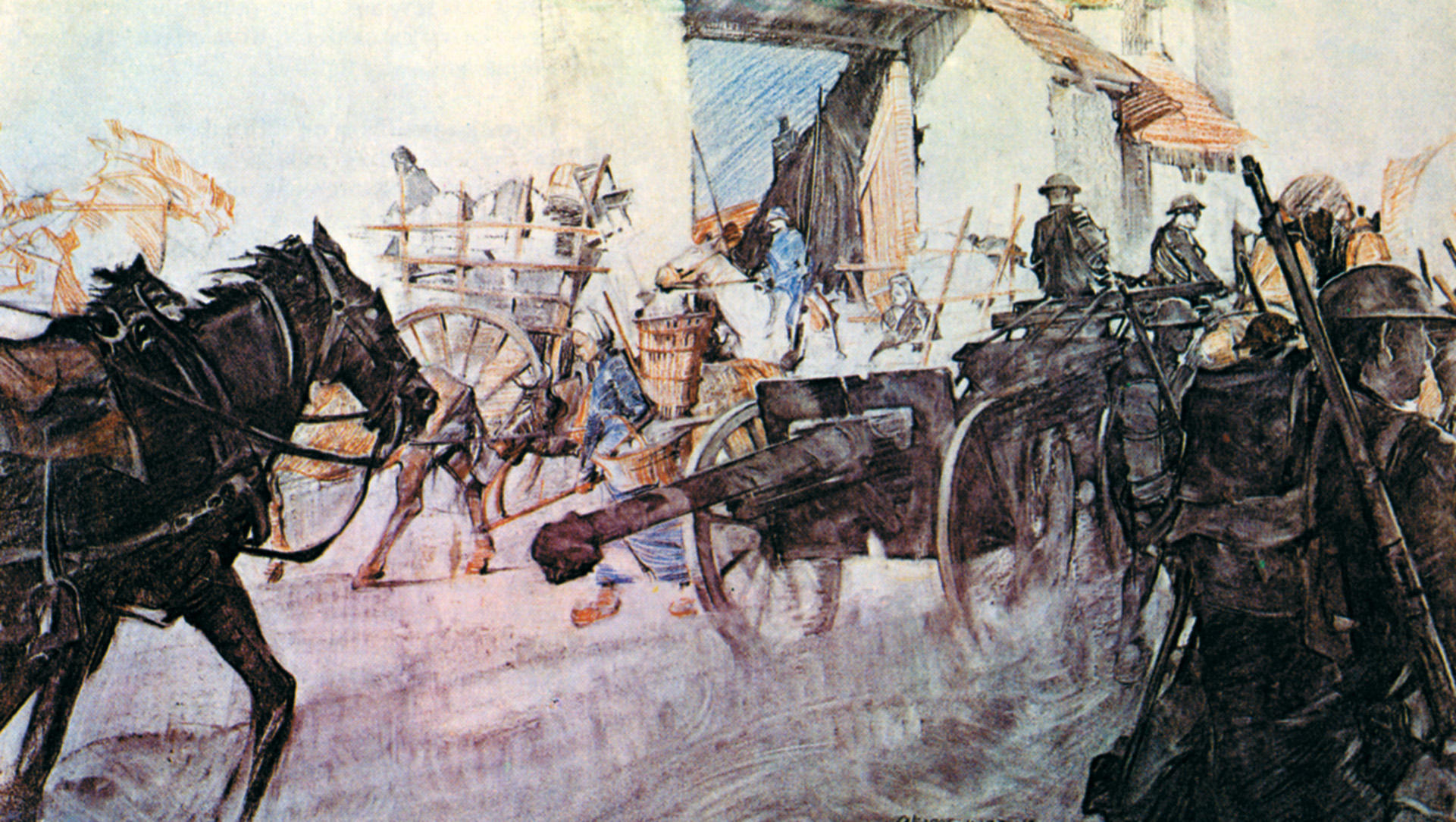
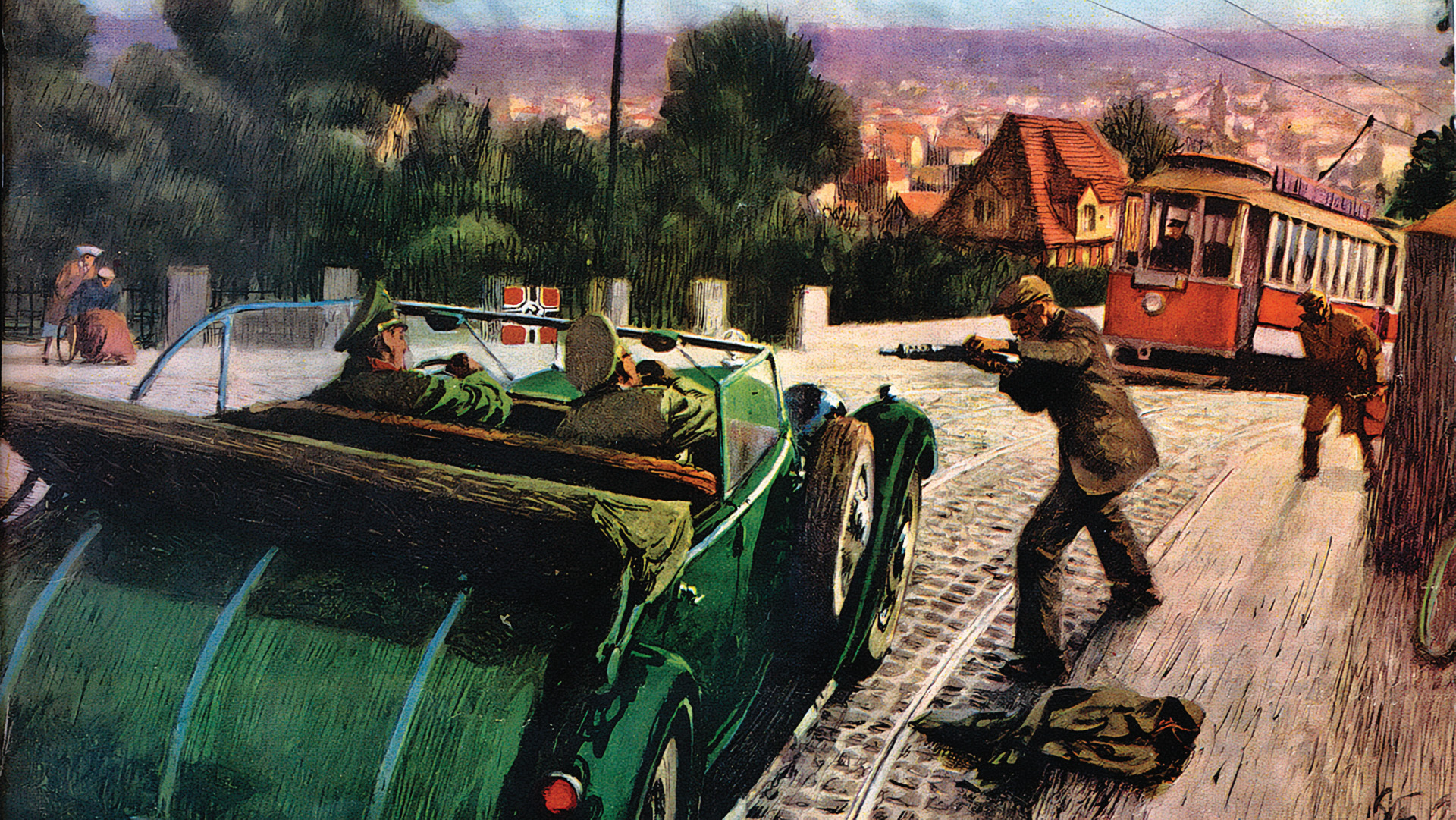
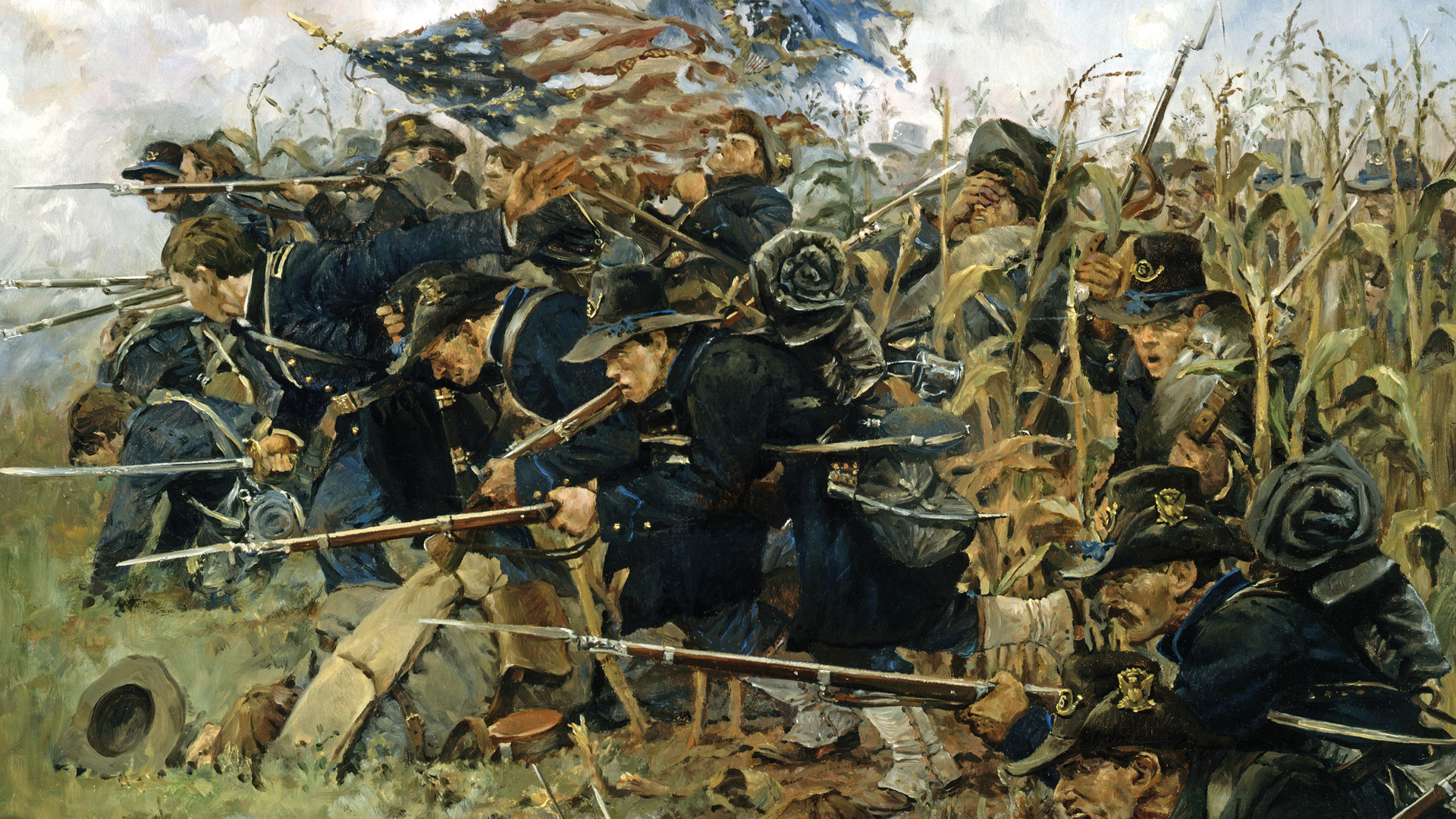
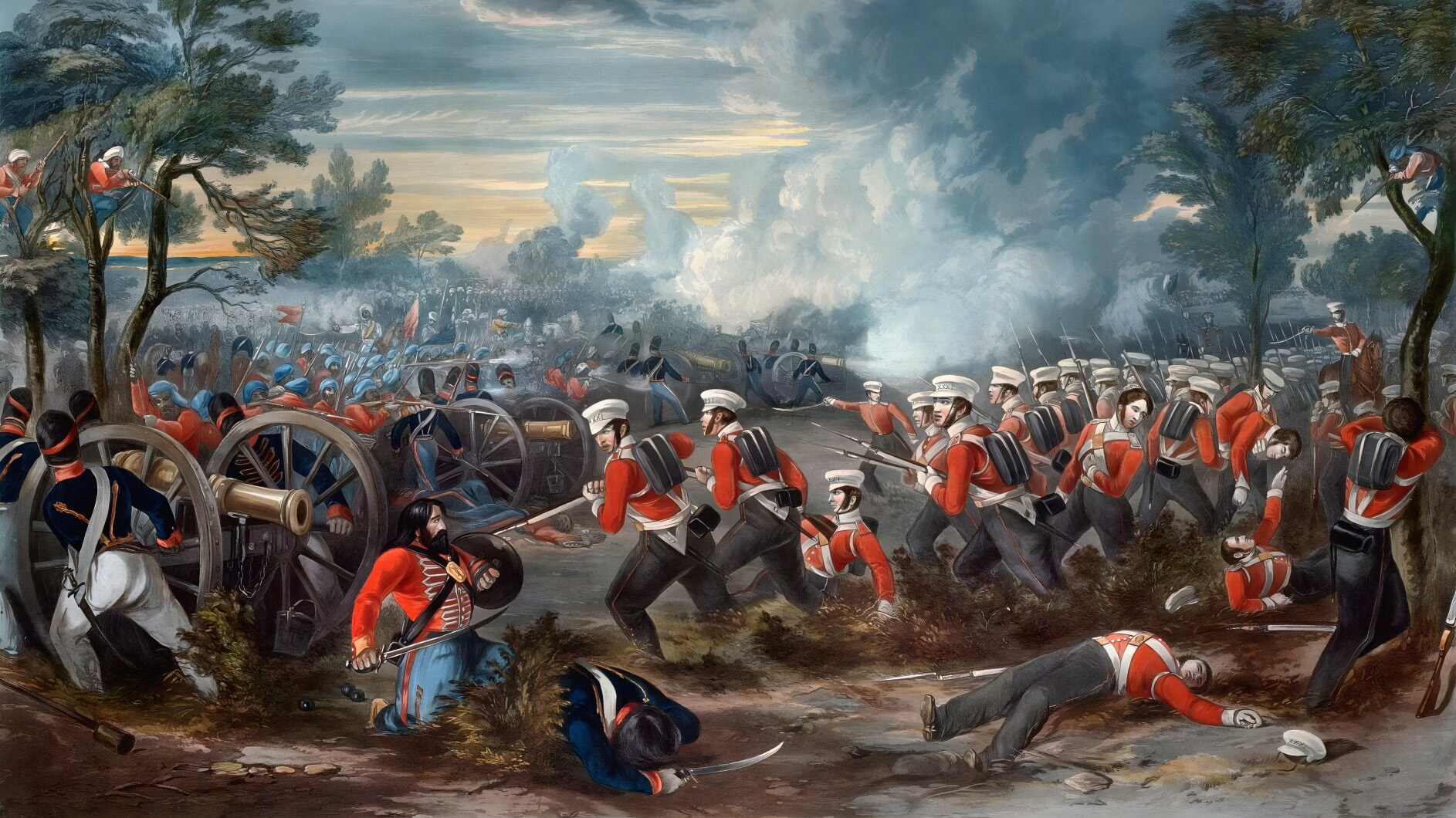
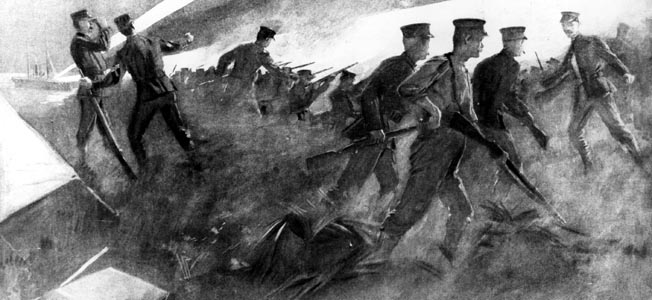
Join The Conversation
Comments
View All Comments